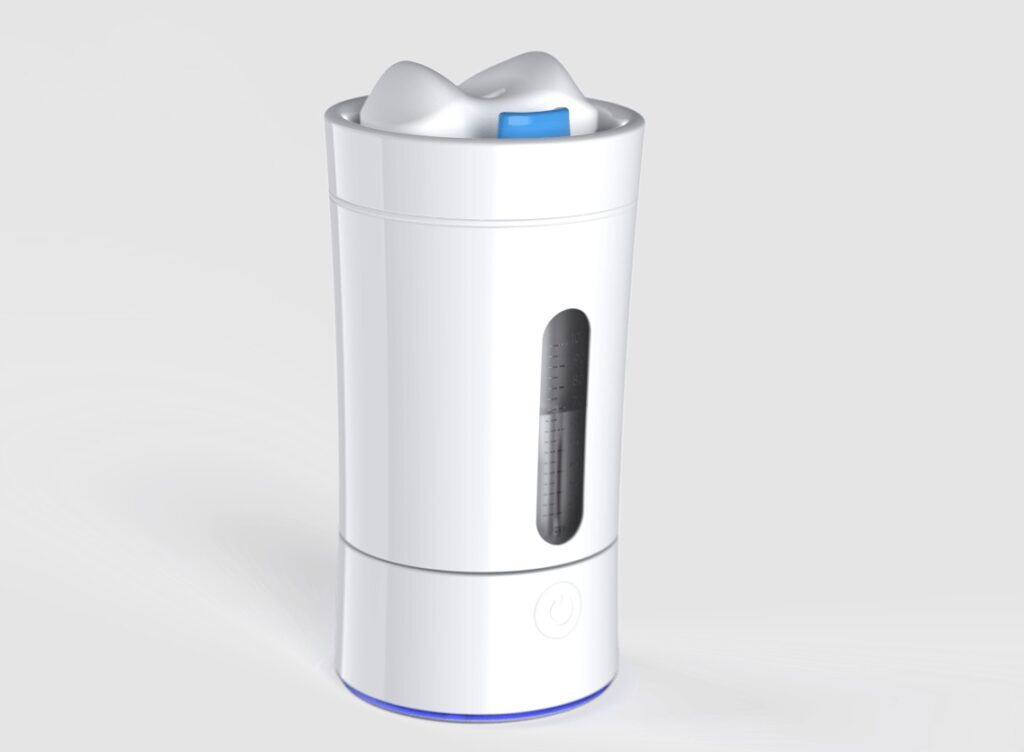S+S, Fall 2024
A medical device disguised as a sippy cup promises to revolutionize treatment for a common childhood ailment. Called the EarFlo, it is on track for approval by mid-2025.
Otitis media with effusion (OME) is one of the most frequent infectious diseases in children, according to the National Institutes of Health. Between 80 and 90 percent of all children will have it before school age, and between 30-40 percent have recurrent episodes. It is also the most common cause of acquired hearing loss in childhood. OME typically occurs when fluid builds in the middle ear and Eustachian tube. Ear tube surgery is a regular procedure used to treat OME.
With all this in mind, a group including Peter Santa Maria, MD, PhD, Vice Chair of Clinical and Translational Research, Chief, Division of Otology/Neurotology, Director of Faculty Innovation, Office of Innovation and Entrepreneurship, and Director, SPARK Global; Matthew Oldakowski (an engineer in Australia); and Jozef Bartunek (a cardiologist from Belgium) conceived of the EarFlo concept using the Biodesign process. Training to be Global Biodesign Fellows, Oldakowski and Bartunek spent time observing problems in the clinic and saw children having ear tube surgery as a large unmet medical need.
First, the group spent time defining the inner medical need. They had to understand the background on why the problem occurs, weaknesses with existing treatments, and how stakeholders influence the problem. Next, they created a roadmap before entering an ideation phase where multiple concepts were generated. Various levels of prototypes were made, with each iteration an improvement. From idea to early prototype was about three to four months.
Two studies on the EarFlo device have now been completed. The first study involved children who came in for a consultation about tube surgery for OME. They were taken aside at the doctor’s office and given the EarFlo. After only one session, 70 percent of children saw improvement.
The second study allowed the children to take home the device. After using the device for four weeks, they received a follow up four weeks later. Only around 10 percent of children were eventually booked for surgery. “These early results suggest the EarFlo is an alternative method that can avoid surgery,” Dr. Santa Maria said.
Now the group is in the final stages of making minor changes to the device before submitting it for regulatory approval. After that, they will look to launch to the public. They are hoping to keep the price below $200, which will be a huge savings if considering the costs of surgery and inconvenience to the family. To make it available as soon as possible, it will first be available as a consumer medical device outside of insurance. Hopefully over time as it continues to show benefit, insurance will help cover it.
The EarFlo has other potential applications. “Not only can it be used for children, but it effectively works in adults, so our next levels of testing and design will be focused on adults,” Dr. Santa Maria said. “These not only include ear infections but those who have Eustachian Tube dysfunction and have difficulty flying, for example.”
